India and Nepal are close neighbours, partly due to history, partly due to geographic compulsions and partly due to diplomatic ties. While India’s neighbour on the west is infamous for grabbing all the headlines, India’s neighbours on the East make surprise visits from time to time.
This week has brought such a surprise with India’s ties with Nepal suddenly becoming a topic of heated debate with participation from all sides. First trigger came when the Indian Minister of Defence, Rajnath Singh inaugurated a shorter route to the Kailash Mansarover Yatra on 8th May, 2020. While this new link to Lipulekh pass may ease the travel of the Yatris, it fomented troubles for India as this pass is a far western point near Kalapani, a disputed area between India and Nepal. Kalapani is a 35 sq km area which India claims is a part of the Pithoragarh district in Uttrakhand and Nepal claims is a part of its Darchula district. Lipulekh is a tri-junction between India, Nepal and China and has been a trade and pilgrimage route from the ancient times. This pass has been used by local traders of India and China (Tibet) for trade with a 2015 agreement between the two countries to further increase the volume. This was seen by New Delhi as a tacit recognition by China of India’s claim in the Kalapani territory and had met adverse reactions from Nepal. The current decision of the Indian government to inaugurate the new link road is not sudden. This project was in the pipeline since 2005 from the time of UPA and BJP had started executing the project two years ago.
What explains Nepali PM KP Sharma Oli’s strong reaction to this announcement is current political position in Nepal. Evoking disputes with India due to domestic political compulsions is not new to Nepali leaders. The last time India-Nepal border dispute heated up was in 1998 when Nepal raised the Kalapani issue with India which lay dormant between 1962-1997. A minor dispute had erupted in 2019 as well when India released a new map in the first week of November. The two sides agreed to settle issues during PM Modi’s visit to Nepal in 2014 as well but the agreed mechanism was not materialised leading to persistence of tensions between the two.
The current tensions between Nepal and India due to the announcement of the link road further flared up when Nepal instead of resorting to a dialogue released a new map claiming Lipulekh, Kalapani and Limpiyadhura as its own territory. This was followed by a statement by the Nepalese Prime Minister KP Oli in Nepali parliament on the Covid19 pandemic. He reportedly said, as seen in a video going viral on social media, that the strain of corona virus as received from India is more virulent than the one received from Wuhan or Dubai. Such a statement coming after the unilateral action by Nepal to release the controversial map has led to a new low in the India-Nepal ties.
With a closer analysis, one can actually see how the latest dispute has its roots in the domestic compulsions of PM Oli to survive. The story goes back to 2018 when in order to strengthen the Communist strong-hold over Nepal, China facilitated a merger between the two communist parties- Communist Party of Nepal (UML) and Communist party of Nepal (Maoist Centre) to form the Nepal Communist Party (NCP). NCP further signed an MoU with international liaison wing of Communist Party of China to strengthen fraternal ties. However, this merger couldn’t mature into an organic partnership as ideological differences remained between their leaders- KP Oli and Pushpa Kamal Dahal (Prachanda). Further, a power tussle between different factions has time and again rattled PM Oli to resort to nationalist card to consolidate his power. PM Oli was once seen as a man close to India in Kathmandu however he not only joined Prachanda in raising the anti-India rhetoric during the 2015 blockade but he also played an ultra-nationalist card in 2016 when Prachanda allied with the Nepali Congress. In 2019, NCP won a huge mandate in Nepal with Oli using anti-India rhetoric to his advantage.
Prachanda and PM Oli share a power-sharing arrangement known as the “gentleman’s agreement” where both leaders will get the Prime Minister’s chair for 2.5 years each. Prachanda’s continuous mentioning of the agreement has irritated Oli and threatened his position. He even promulgated two ordinances of which one was particularly problematic as it aimed to ease up process of splitting up of political parties in Nepal. The ordinances created a political crisis in Nepal. He ultimately had to withdraw the ordinances within two days of getting the Presidential assent. This didn’t end before activism by Chinese Ambassador to Nepal, Hou Yanqi who had a meeting with top political leadership to make sure all is well within the communist camp. As per the protocol, officials of the foreign ministry must be present at such meetings but this protocol was breached as it was held without their presence, leading to suspicion of a Chinese hand in Nepal’s internal politics.
China’s role in Nepal and the Communist appeasement of China has come under a lot of criticism off late- Case in point is an article published by The Kathmandu Post in February, 2020 which criticised China’s response to Covid19 and showed Chinese leader Mao Zedong’s picture on Chinese currency with a mask. This was reproduction of an article originally published in South Korea. It is interesting to note that China didn’t reprimand Seoul over this but in case of Nepal, a scathing statement targeting the editor was published because ruling dispensation has repeatedly shown a willingness to bend over backwards for China. Madhesi blockade which is rumoured to be tacitly backed by India has also helped China to get a foot in Nepal with Nepal getting access to seven transit points and three land ports in China. Still difficult terrain between China and Nepal means that India continues to have its position safe.
Protests against China are also very common. In August 2019, a protest took place against Huawei for hacking more than 200 Nepali websites. There were also complaints against the Nepali Minister of Communications for showing favouritism towards Huawei. Similarly, an ATM scandal also erupted in Nepal where Chinese nationals hacked ATMs and stole cash to the tune of US$ 9000 leading banks to impose withdrawal limit which created inconvenience for average Nepali people during the festive season of Dashain.
PM Oli since the beginning of his rule in 2018 is seen as a man who will not shy away from playing a nationalist card against India in order to consolidate his grip over Nepali politics. It is not that India doesn’t recognize this because what else explains India’s dropping of the support to Madhesis and asking them to join the mainstream in Kathmandu. However, the use of anti-India rhetoric even during a sensitive time such as Covid19 pandemic is unworthy of a statesman. India has been actively helping Nepal in overcoming the crisis by sending medical aid, facilitating border trade and even sending its military doctors to Nepal. It is up to the two countries to now show some restraint and work towards a peaceful solution.
About the Author

Monica is a PhD Candidate at Department of International Relations, South Asian University where she is assessing the political economy of regional integration in South Asia. She tweets at: @trulymonica.






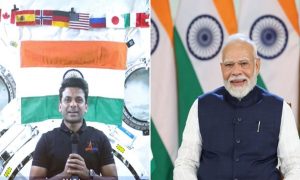



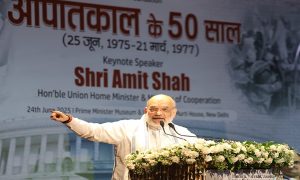

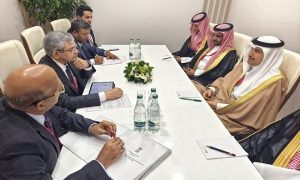

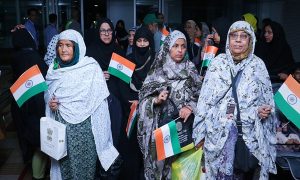

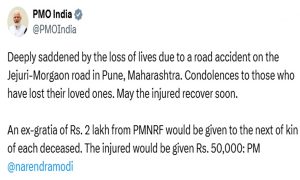



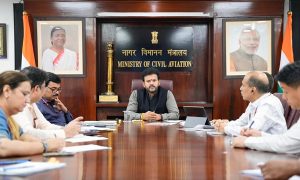









 WhatsApp us
WhatsApp us